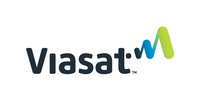Chinese telecommunications giant Huawei teamed up with Vodafone Spain this week to launch the first commercial application of dual-band High Speed Downlink Packet Access (DB-HSDPA) technology.
According to a Monday release from Huawei, the new solution delivers double the UMTS throughput that is available from a single carrier on UMTS 900 MHz.
UMTS, or the Universal Mobile Telecommunications System, is the dominant 3G standard in Europe. Cooperation between the UMTS 900 MHz and UMTS 2100 MHz bands is “an important part of European UMTS strategy,” Huawei said.
Until now, Huawei said Vodafone Spain’s network included only a single carrier on UMTS 900 MHz, which the company said can absorb a larger number of subscribers than UMTS 2100 MHz. The deployment of the new DB-HSDPA technology, though, will improve the user experience for subscribers on the UMTS 900 MHz networks as devices receive and monitor two bands simultaneously, Huawei said.
Chipsets that support DB-HSDPA technology have been incorporated in commercial handsets and devices since the second half of last year, Huawei said.
The news comes on the heels of Huawei’s announcement it is conducting technical trials of 4.5G technology with Vodafone U.K.
According to Huawei, the 4.5G trials aim to deliver a technology that can significantly increase capacity and efficiency in urban 4G networks while simultaneously laying the foundation for 5G.
Huawei said it is working with Vodafone U.K. to test new 4×4 Multiple-Input Multiple-Output (MIMO) and eight-way transmit and receive alongside multi-user beam forming in Manchester, England.
Huawei said beam forming and four-way receiver diversity combine signals from multiple angles and co-located antennas to reduce interference and improve throughput, making the technology well suited to boost performance in urban areas.
The trial of combined MIMO and beam forming is aimed at better focusing Vodafone’s mobile signals to customers so more signals reach more subscribers in urban areas, particularly at the edge of the base station coverage, Huawei said.
“This joint innovation with Vodafone has proved that 4.5G (TDD+) is a good solution to release the potential of TDD spectrum and will help Vodafone build the most advanced LTE network available,” Huawei LTE TDD President Veni Shone said. “The newly deployed LTE TDD network immediately serves the LTE TDD capable commercial smartphones and successfully carries significant live network traffic. This trial proves that LTE TDD with the most recent technologies can be naturally converged with LTE FDD and improve the overall experience enjoyed by all users on the network.”
Filed Under: Wireless • 5G and more, Infrastructure




